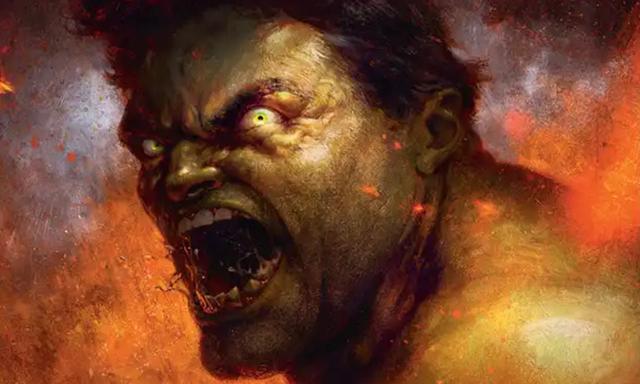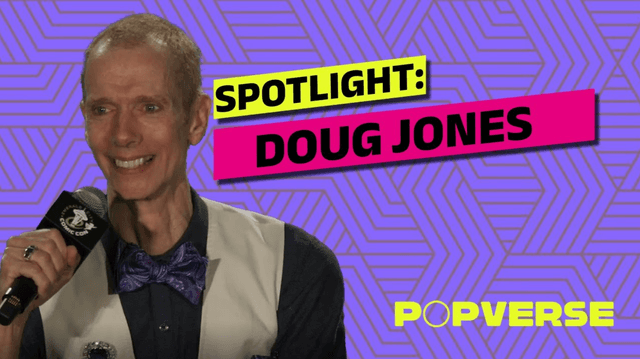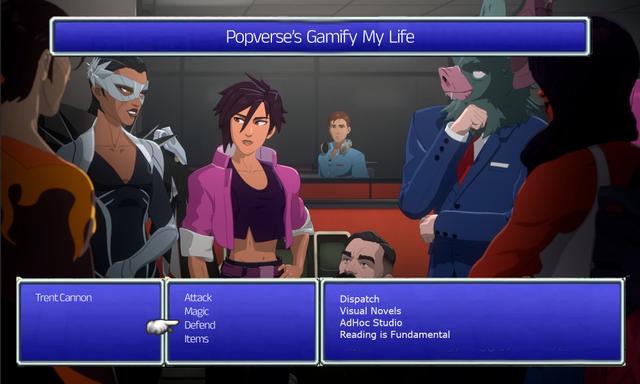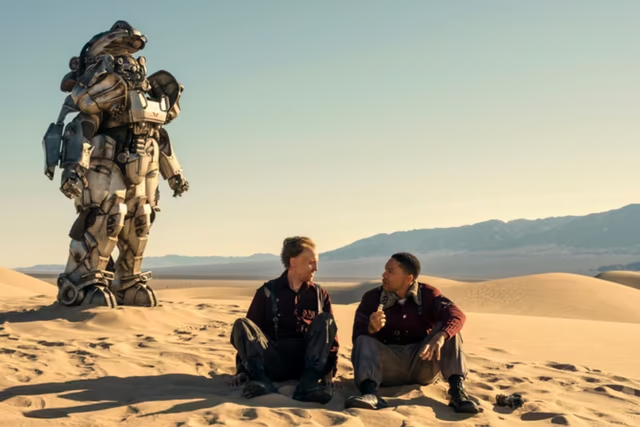If you click on a link and make a purchase we may receive a small commission. Read our editorial policy.
Black Adam, Michael Corleone, Charles Foster Kane, and Darth Vader: the eerie parallels between four iconic characters
With the Black Adam film in theaters, we look at the character's connections to three other iconic cinematic icons

Debuting as a dark reflection of the superhero Captain Marvel in Fawcett Comics’ The Marvel Family #1, Black Adam began as little more than a blank slate focused on world domination. Despite these simple beginnings, however, Black Adam has evolved into one of DC’s premiere characters, alternating between antihero and outright villain, defined by his addiction to power and possessiveness over those he cares. In particular, three stories help solidify these qualities as part of Black Adam’s character: the 'Black Reign' crossover led by Geoff Johns between JSA and Hawkman; World War III, which spun out of the event series 52; and Black Adam: The Dark Age by Peter J. Tomasi and Doug Mahnke. Adam has become such a popular character, he is the lead character in a film starring Dwayne 'The Rock' Johnson. Black Adam’s jump to cinema as the protagonist of his own film should not be a surprise - the aspects that have come to define Black Adam in the comics are key traits to three of cinema’s most famous characters: Michael Corleone, Charles Foster Kane, and Darth Vader.
Black Reign: When Black Adam was a liberator

Published in 2004, 'Black Reign' was a crossover event between two series that shared the same writer, Geoff Johns. The story sees Black Adam leading a group of fallen heroes to liberate his home nation of Kahndaq (a fictional nation that syncretizes Egypt and various Middle Eastern nations depending on the needs of the story). Writer Geoff Johns introduces the story from Adam’s point of view, and provides his perspective on his allies and his mission to "bring justice to this place." In particular, Adam gives attention to Albert Rothstein, aka Atom Smasher, saying "In truth, he has become the closest thing I have to a brother. A younger brother who still has much to learn — but a brother nonetheless."
The dynamic between Black Adam and Atom Smasher helps to highlight Adam’s hypocrisy. When Atom Smasher questions why Adam takes the name 'Black Adam' instead of the heroic moniker, 'Mighty Adam,' Adam responds, “Black is not a color to be ashamed of, Atom Smasher. It represents a deeper level of consciousness. A banishment of evil and negativity.” This answer is juxtaposed by penciller Don Kramer with Atom Smasher looking at a tank that Adam and his team have destroyed. The carnage flies in the face of the ideals that Adam states.
Charles Foster Kane and Black Adam: masquerading as the People’s Champion

In Citizen Kane, a similar dynamic exists between Charles Foster Kane (Orson Welles) and his friend, Jedediah Leland (Joseph Cotten). Charles Foster Kane begins his career in the newspaper business as a man of ideals, and Citizen Kane operates as a brilliant character study of a man who begins to sacrifice those stated ideals for the power and adoration he feels. This is made textual in the film’s midpoint, when Leland confronts Kane after a failed election bid. Leland says, “You talk about the people as though you own them. As though they belong to you. Goodness. As long as I can remember, you’ve talked about giving the people their rights. As if you could make them a present of liberty as a reward for services rendered… "You’re not gonna like that one little bit when you find out it means that your working man expects something as his right, not as your gift, Charlie."
In the same way that tensions grow between Kane and Leland, so do they grow between Adam and Atom Smasher throughout the Black Reign crossover. While Atom recognizes that the people of Kahndaq really were in danger under the rule of Asim Muhunnad, and that Black Adam is a hero to them, the continued escalations between Adam’s team and the Justice Society of America (of which both Adam and Atom Smasher were former members) causes Atom Smasher to see the flaws behind Adam’s actions. While Black Adam may want the best for the people of Kahndaq, it comes from his own desires of what the world should be in his eyes, rather than a desire to enact the will of the people.
When Adam proposes to expand his rule beyond Kahndaq’s borders, Atom Smasher turns against him, “Here, within these borders, what we accomplished was amazing. We freed hundreds of thousands of people from an oppressive rule. And I know you don’t want to become another Asim Muhunnad. But the minute we force your will on the rest of the world, that is exactly what you’ll be doing.” While Adam and the JSA are able to come to a truce that leaves him in power in Kahndaq, Atom Smasher finds himself disillusioned with his former ally, and the story ends with the young hero leaving Kahndaq and entering the desert, alone.
Black Adam and the Godfather: when wrath consumes legacy

In May 2006, DC began publishing 52, a collaborative effort between writers Geoff Johns, Grant Morrison, Mark Waid, Greg Rucka, and artists Keith Giffen, Eddy Barrows, and many others that saw 52 issues published weekly over the course of a year and chronicling events across the DC Universe over a year in-universe. During that series, Black Adam freed Adrianna Tomaz from slavery, and softened his rule in Kahndaq due to her advice. In 52 #12, Adam shows Adrianna the tomb of his old family from Ancient Kahndaq, explaining “You have to understand, I execute so no one else will feel the emptiness that I do.”
Like Adam, Michael Corleone is also concerned with protecting his family. The Godfather sees Michael (Al Pacino) protect his family - or at least his idea of it. While the film depicts the call of the family business to Michael from his point of view, it becomes clear that he isn’t as adverse to it as he initially projects. This becomes a primary focus of the sequel, The Godfather Part II in which the legacy of Vito Corleone not only hangs over Michael’s mind, but over the very narrative structure of the film, with the sequel interweaving Vito’s rise in power with Michael’s fall.
As 52 continues, Adrianna is invited by Adam to join the Marvel family (the group of heroes centered around Captain Marvel aka Shazam) and the two form a romantic relationship. Though Adam and Isis tried to show the world they were reformed, various forces were highly skeptical, culminating in a violent clash that left Isis dead, and Adam enraged. The result is Adam waging war against the larger DC Universe on a genocidal scale in the mini-series World War III by Keith Champaigne, John Ostrander, Pat Olliffe, Andy Smith, Tom Derenick, and Jack Jadson. Though Adam had made strides with Isis to rehabilitate his own image, his true colors show in World War III as he breaks the alliances he and Isis had worked so hard to forge. While Isis imagined a new sense of order and peace in the world, Adam’s own actions destroy any chance of her legacy being remembered warmly.
While Michael Corleone’s war doesn’t reach the scale of Adam’s war, his hubris leads to the destruction of the relationships he professes are most dear to him. Two key interactions highlight Michael’s hypocrisy. The first, a fight with his wife Kay (Diane Keaton) after she tries to leave him. When Kay tells Michael that his work has caused damage to their family, not only does he outright deny it, he assaults her, fully destroying his already broken marriage, and tearing his family asunder.
The second is Michael’s conflict with his elder brother, Fredo (John Cazale). As tensions mount between the Corleone family and a rival organization, it becomes clear that Fredo has betrayed the family in some way. During the film’s final act, Michael confronts Fredo. The conversation intentionally mirrors the confrontation between Michael and Kay, with Fredo explaining his actions - a combination of insecurities about being passed over in the family business. Michael responds, “Fredo, you’re nothing to me now. You’re not a brother. You’re not a friend. I don’t want to know you or what you do.” But harsh words and exile are not enough, and Michael has his brother killed. The film ends with Michael, sitting alone, with no actual family to speak of, an ultimate betrayal of his father’s legacy in the same way Adam’s World War III destroys the legacy of Isis.
Black Adam and Darth Vader: Death’s banes

If World War III highlights Adam’s selfish destruction, it’s sequel Black Adam: The Dark Age highlights his refusal to accept loss. To be clear, this isn’t a desire to overcome a sporting deficit, but the refusal to accept a fundamental aspect of life - everything dies. The boundary between heroism and villainy often comes in the acceptance that some things are truly out of our control. Defeated and depowered, Black Adam: The Dark Age tells the story of Adam trying to revive his murdered bride, Isis. Assisted by the supervillain Felix Faust, Adam’s actions grow increasingly more desperate and dangerous.
The same pattern can be observed in Darth Vader. While the original Star Wars trilogy sets Vader out as a dark force on a path of redemption, it is the prequels that help further characterize him. After losing his mother in Attack of the Clones, Anakin Skywalker (Hayden Christensen) goes on a genocidal attack against the Tusken Raiders of Tatooine. Like Adam, however, this monstrous action isn’t enough for Anakin, who is haunted by dreams of his wife dying in childbirth. Desperate to prevent this, Revenge of the Sith sees Anakin fall under the influence of Chancellor Palpatine, and ultimately falling to the Dark Side of the Force. Felix Faust’s presence in Black Adam: The Dark Age closely resembles Palpatine’s in Revenge of the Sith, both are evil sorcerers manipulating a broken man to serve their own needs. Anakin's fear of losing his family, a family that has not yet come to be, causes him to actively destroy the one he has. As Darth Vader, he leads an army into the Jedi Temple and slaughters the members of the Order that raised him, down to the children. If Michael Corleone’s wrath lacked the horrific spectacle of Adam’s, Vader is more than up to the challenge. Yet the root cause of Vader’s actions are a lack of control over life itself. During the film’s climax, when confronted by his pregnant wife, Padme (Natalie Portman), Vader’s response to her accusations is to position himself as a protector. Padme explains, “Anakin, all I want is your love." But rather than accept those words, Vader responds, "Love won’t save you, Padme. Only my new powers can do that."
In the operatic world of Star Wars, this culminates in the way one would expect - Darth Vader chokes Padme and then engages in a violent lightsaber battle with his mentor, Obi-Wan Kenobi (Ewan McGregor). The battle leaves Anakin burning wretch, and the damage he did when he assaulted Padme brings about the dream he fought so hard to ward off.
Power reveals the inner monster
Adam’s story parallels both that of Michael Corleone and Darth Vader. His own powers draw from the same resource he intends to use to bring Isis back, and so while he forcefully uses his powers in attempts to locate the pieces of Isis’ Amulet in order to revive her, he is also actively destroying his ability to succeed. His actions also draw attention from the superhero community, effectively solidifying himself as a supervillain in the public’s eye.
The truth with all three of these characters is not that they were corrupted by the power they acquired, but that the power gave life to their inner weaknesses. Adam, Kane, Corleone, Vader, all are ultimately undone by their need to own and control their worlds, and ultimately all lose. Like Kane in the expansive mansion of Xanadu, Michael Corleone at Lake Tahoe, or Vader aboard a Star Destroyer, Adam’s selfish pursuits and the means he takes to achieve them leave him broken and alone, kneeling before a tattered portrait of he and his bride.
Given the box office success of the Black Adam, film, we asked (and answered) the question: Do Black Adam and other DC antiheroes appeal more to moviegoers?
Follow Popverse for upcoming event coverage and news
Find out how we conduct our review by reading our review policy
Let Popverse be your tour guide through the wilderness of pop culture
Sign in and let us help you find your new favorite thing.
















Comments
Want to join the discussion? Please activate your account first.
Visit Reedpop ID if you need to resend the confirmation email.